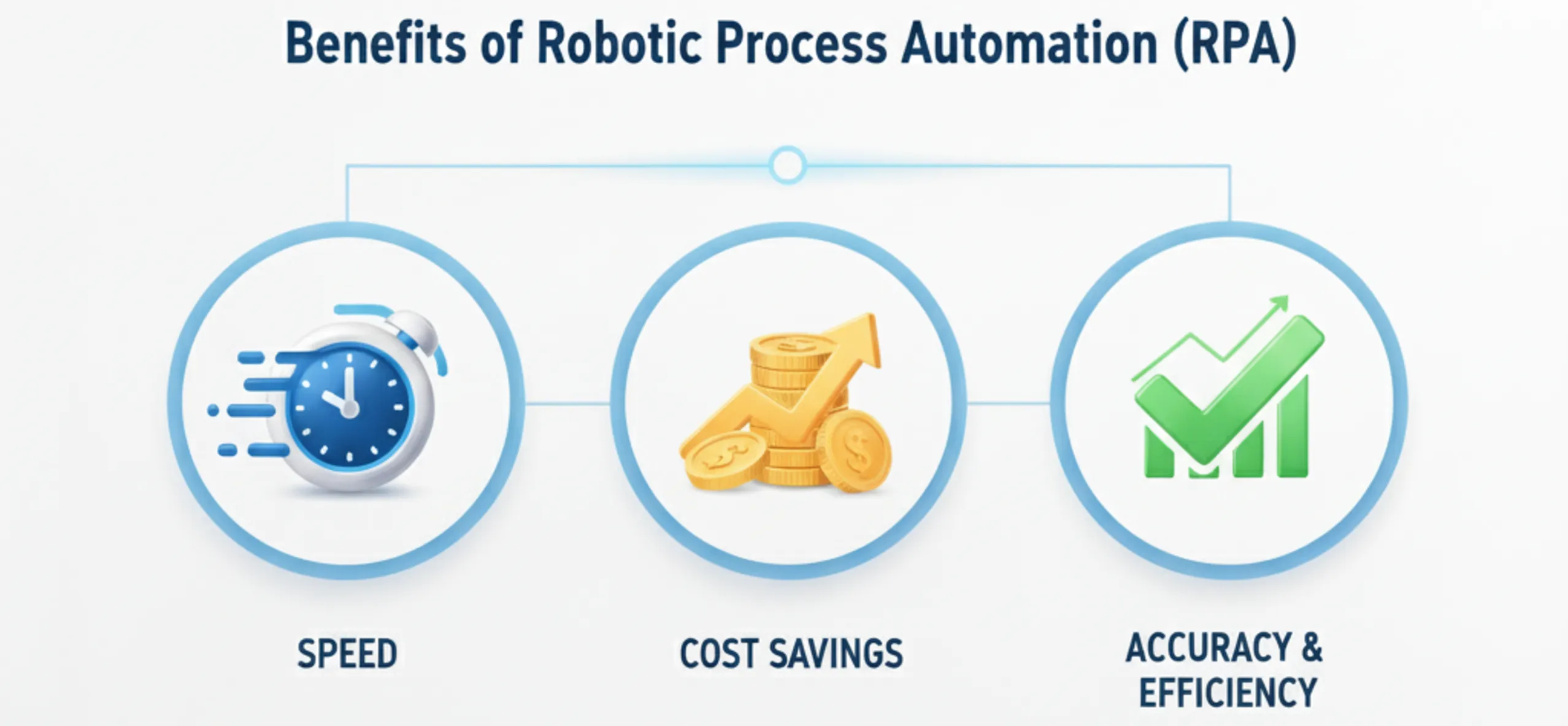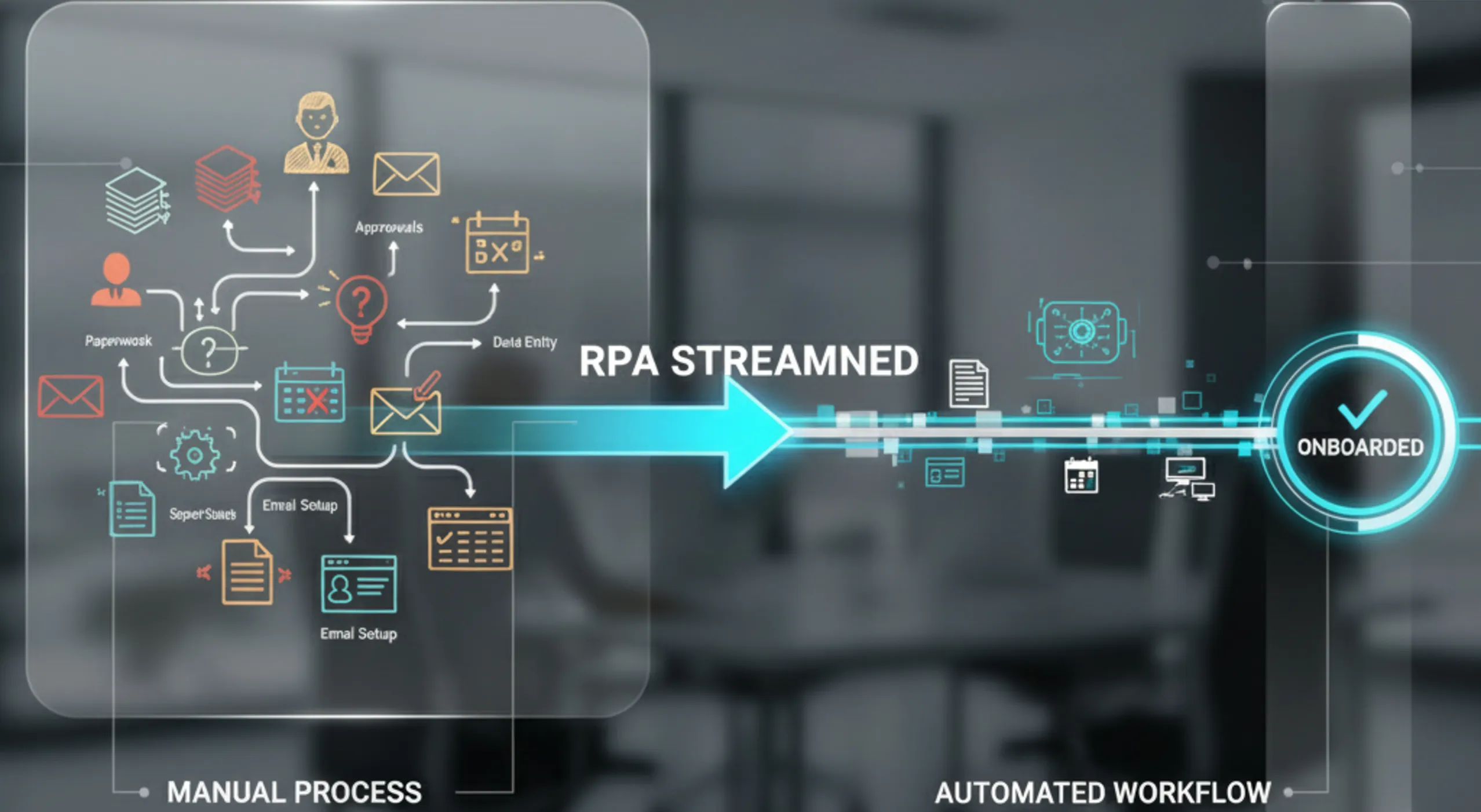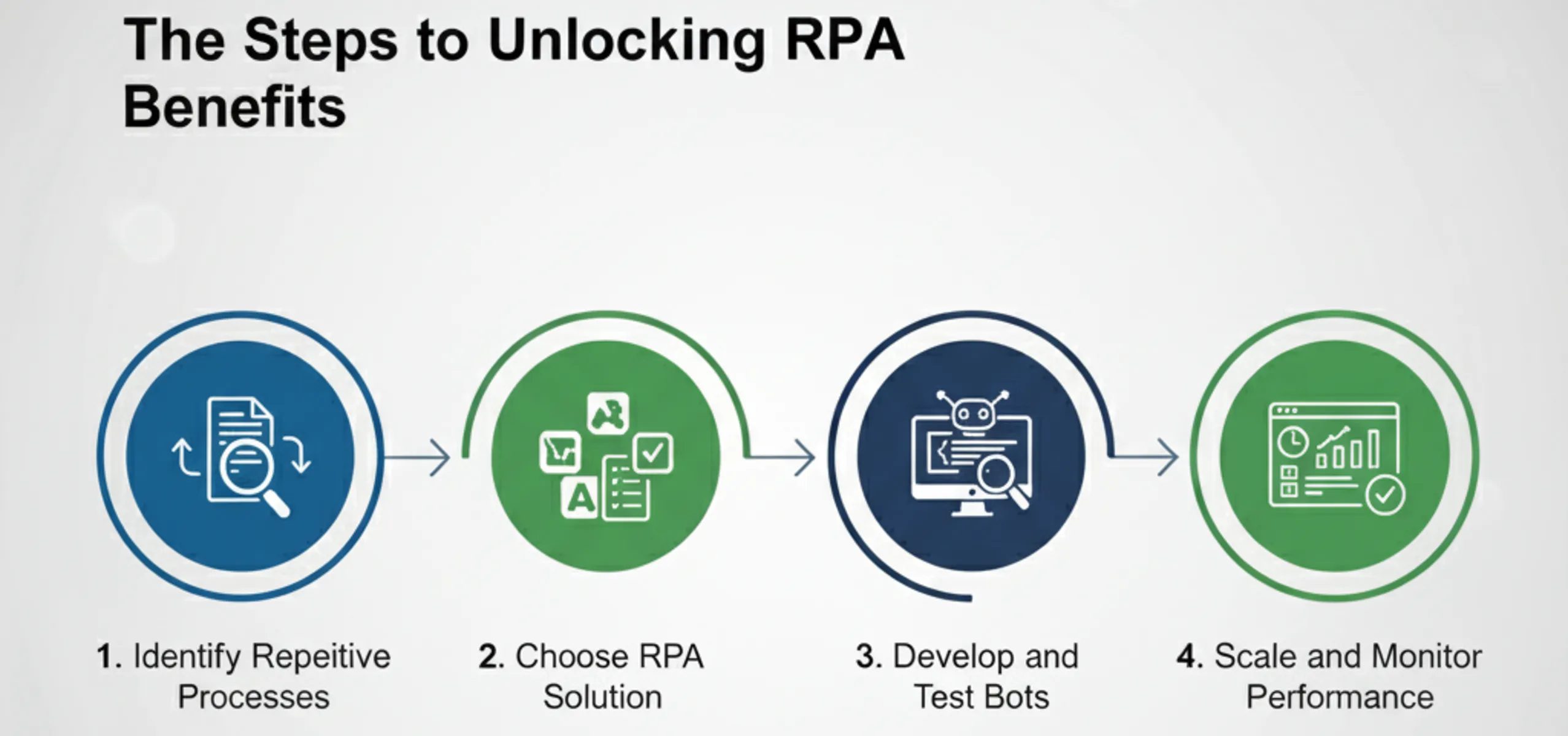Unlock The Power Of RPA What Robotic Process Automation Can Do For You
Imagine spending hours each week on repetitive, manual tasks that drain your energy and productivity. Now, picture a world where these routine processes run effortlessly in the background, giving you time to focus on creativity and strategy. This transformative possibility is at the heart of RPA benefits. Robotic Process Automation empowers businesses and individuals to streamline operations, reduce errors, and reclaim valuable time. Discover how RPA can turn everyday inefficiencies into opportunities for innovation and growth.
Understanding RPA: The Basics You Need to Know
Robotic Process Automation, often shortened to RPA, refers to the use of software bots to handle rule-based, repetitive tasks typically done by humans.
These bots mimic human interactions with digital systems, from inputting data to processing transactions.
RPA is not about having physical robots wander the office—it’s about using intelligent software to enhance operations. These digital assistants work tirelessly, never taking breaks or making careless mistakes due to fatigue.
How RPA Works in Everyday Business
- The power behind RPA lies in its versatility. Whether you’re managing invoices, onboarding new employees, or handling customer queries, RPA bots can be trained to navigate applications, extract data, and execute processes just like a human would.
- Some common examples include:
-
- Entering data into spreadsheets
- Processing payroll and HR forms
- Managing email inboxes
- Reconciling financial statements
- The key advantage: RPA bots free up human employees to tackle more complex, creative, or customer-facing work.
![]()
Who Can Leverage RPA?
- Virtually any business, from startups to multinational corporations, can unlock significant RPA benefits.
- Industries such as finance, healthcare, insurance, manufacturing, and retail are leading the way in RPA adoption. Even small and medium-sized businesses can quickly scale their automation efforts to fit unique needs.
Top RPA Benefits for Businesses
The rise of Robotic Process Automation is not just a trend—it’s a proven strategy for driving efficiency. Here’s why leaders across industries are investing in RPA solutions.
- Increased Productivity and Speed : RPA bots work around the clock without fatigue. They can accomplish tasks in a fraction of the time it takes a human, allowing businesses to get more done in less time. For example, a global bank deployed RPA bots for data entry, resulting in an 80% reduction in processing time.
- Cost Savings : By automating repetitive tasks, companies save on labor costs and associated expenses such as training, benefits, and overtime. Studies suggest that RPA can reduce operational costs by as much as 30–50%, especially in processes heavy with manual labor.
- Fewer Errors and Improved Accuracy : Human error is inevitable, especially in mundane, repetitive processes. RPA benefits include pinpoint accuracy with data, reducing costly mistakes and compliance risks. For example, accounting departments can automate reconciliation with near-perfect precision.
- Scalability and Flexibility : Need to process more transactions during busy periods? RPA easily scales with your business. Deploy more bots or adjust existing ones with minimal setup—perfect for seasonal fluctuations or sudden growth.
- Employee Satisfaction and Upskilling : By offloading tedious tasks to bots, staff can focus on meaningful, value-added work. This shift not only reduces burnout but also fosters an environment for employees to learn new, higher-level skills.
-
- As analyst firm Gartner notes, “RPA offers a rapid, non-intrusive route to business process automation with a potentially significant return on investment.”

Common Use Cases: Where RPA Makes the Biggest Impact
Wondering where to start with process automation? Here are practical examples of RPA’s everyday uses.
Finance and Accounting
From invoice processing to expense report management, RPA bots streamline tedious financial tasks.
They can:
- Automatically extract and input data from invoices
- Match purchase orders with receipts
- Generate and send payment reminders
- Perform recurring audits
Customer Service
RPA’s ability to quickly sift through databases enables customer service agents to resolve issues faster.
Bots can:
- Auto-respond to simple queries
- Update customer records
- Assign support tickets to the right representatives
Human Resources
HR teams benefit significantly from RPA benefits.
Bots can:
- Onboard new hires by filling out forms and setting up system access
- Manage employee records with zero mistakes
- Schedule interviews and send notifications
Healthcare Administration
Healthcare providers use RPA to manage medical records, insurance claims, and appointment scheduling.
Tasks automated by RPA include:
- Patient data entry and verification
- Processing claims faster and more accurately
- Communicating reminders to patients

The Steps to Unlocking RPA Benefits in Your Organization
Understanding the advantages of RPA is the first step—implementing it strategically is where the real transformation happens.
1. Identify Repetitive, Rule-Based Processes
Look for tasks that are:
- High-volume and repetitive
- Rule-driven with clear, consistent procedures
- Prone to human error
- Time-consuming for your staff
Examples include invoice processing, data entry, and report generation.
2. Choose the Right RPA Solution
Numerous RPA platforms exist, from UiPath and Blue Prism to Automation Anywhere.
Consider factors such as:
- Integration with your current systems
- User-friendliness and support
- Scalability for future growth
- Cost and licensing
Don’t forget to involve your IT department for security and compliance considerations.
3. Develop and Test Bots
Design RPA bots to mimic the steps humans take within digital systems.
It’s best to:
- Start small with a straightforward process
- Test rigorously before going live
- Collect feedback from staff to tweak bot behavior for optimal results
4. Scale and Monitor Performance
Once proven, expand automation to other departments. Use dashboards to track:
- Time saved
- Error rates
- Overall process efficiency
- Employee satisfaction
Monitoring these metrics ensures you fully harness the power of RPA benefits and adapt as business needs change.

Addressing Common Myths About RPA
Despite clear advantages, some organizations hesitate to adopt RPA due to misconceptions. Let’s debunk the most persistent myths.
- Myth: RPA Replaces Human Jobs
- Reality: RPA is designed to enhance—not replace—human workers. By taking over dull, low-value tasks, employees can engage more in strategic thinking, customer service, and innovation.
- Myth: RPA Implementation Is Difficult
- Reality: With user-friendly platforms and increasing cloud-based solutions, getting started with RPA is easier than ever. Today, many platforms offer no-code or low-code options.
- Myth: RPA Is Only for Large Enterprises
- Reality: While global corporations may lead in adoption, small and medium-sized businesses benefit equally. With scalable pricing and simple deployment, RPA can fit any budget or company size.
Maximizing RPA: Tips for Sustainable Success
To ensure long-term ROI, approach RPA implementation with strategy and vision.
- Engage All Stakeholders Early
Involve employees, managers, and IT teams from the start. Transparent communication reduces resistance and enables smoother adoption.
- Prioritize Change Management
Automation can change workflows and job roles. Offer training and upskilling for affected staff, highlighting how RPA benefits their daily work.
- Establish Clear Governance
Set guidelines for how RPA is used, monitored, and updated. Assign a dedicated team to regularly assess processes and opportunities for further automation.
- Continuously Improve
The automation journey doesn’t end after deployment. Periodically evaluate your processes to:
-
- Identify additional areas for automation
- Refine existing bot operations based on feedback
- Leverage new features as the technology evolves
Looking Ahead: The Future of RPA
RPA is quickly evolving, creating new possibilities for organizations of all sizes.

Integrating Artificial Intelligence
Modern RPA platforms are incorporating AI to handle more dynamic, judgment-based tasks. This blend (known as intelligent automation)
This enables bots to:
- Interpret unstructured data (like emails or documents)
- Make decisions using machine learning
- Automate end-to-end business workflows
For example, an insurance company can use AI-enhanced bots to process claims, automatically reviewing documents, extracting relevant information, and making approval decisions with minimal human oversight.
Expanding Beyond the Back Office
While traditionally used for support functions, RPA is moving into core operations, including customer engagement and product delivery. This shift means even more opportunities to boost customer satisfaction and drive business innovation.
Adapting for a Digital Workforce
As more employees work remotely or in hybrid environments, digital automation becomes even more valuable. RPA ensures business continuity regardless of location or time zone, further demonstrating its long-term viability.
Your Next Steps: Getting Started with RPA
RPA is no longer a distant dream—it’s a practical tool delivering tangible results across industries. The most successful organizations are those that embrace automation early, thoughtfully, and with a focus on human empowerment.
The RPA benefits you’ve discovered are only the beginning. Whether your goal is to streamline operations, reduce costs, or spark innovation, automation can help you unlock new opportunities and stay competitive.
Yes AI
Tel. : 096-879-5445
LINE : @yeswebdesign
E-mail : info@yeswebdesignstudio.com
Address : 17th Floor, Wittayakit Building, Phayathai Rd, Wang Mai, Pathum Wan, Bangkok 10330
(BTS SIAM STATION)
